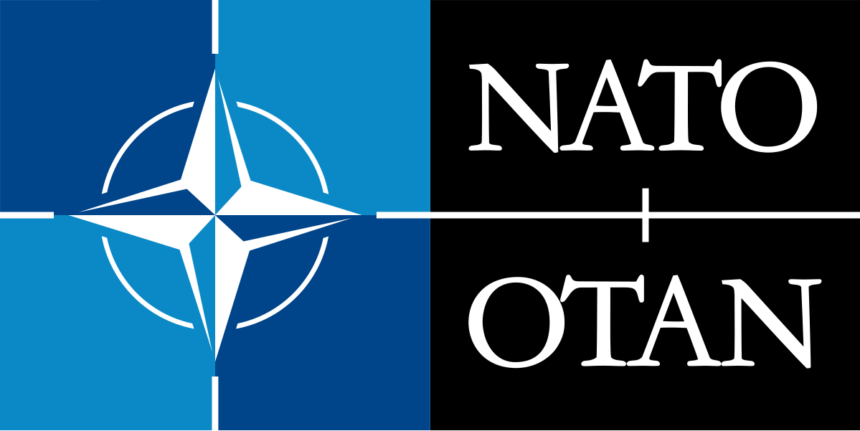Summary by Geopolist | Istanbul Center for Geopolitics:
The article “Climate Security at NATO: Looking Beyond Today’s Wars” by Louise van Schaik discusses NATO’s evolving focus on climate security. Key points include:
- NATO’s Climate Security Integration: NATO has recognized climate change as a security threat since 2010, incorporating it into its strategic concept and developing initiatives like the 2021 Action Plan for Climate Change and Security.
- Recent Developments: The 2023 NATO Summit highlighted the establishment of a Centre of Excellence for Climate Change and Security in Montreal and the release of NATO’s third climate-security risk assessment.
- Challenges and Future Directions: NATO must balance immediate security concerns with long-term climate impacts. It needs to enhance emission reduction commitments, innovate low-carbon technologies, and integrate climate considerations into military operations. Collaboration with the EU and US on clean energy transition policies is essential.
- Leadership and Implementation: Strong leadership is crucial for continuing climate-security initiatives. The new Secretary-General is urged to maintain the momentum set by Jens Stoltenberg.
The article concludes that while NATO has made significant strides in addressing climate security, more concrete actions and deeper integration of climate policies are necessary for future preparedness.
Read more below.
The celebration of 75 years of NATO existence in Washington DC confirmed a remaining strong support to Ukraine and singled out China as enabler of Russia’s war activities, and hence a security risk. Some time was devoted at the Summit and its Public Forum to other issues, such as the need to innovate and address imminent concerns like climate-related security risks. This showcases NATO’s continued ability to keep a strategic focus. But what has NATO done so far to prepare for climate change, why is this relevant for a military-focused organisation, and what could be done more in this area?
Climate security on NATO’s agenda
Addressing climate change in a military environment is not a given. This enemy does not have a face and cannot be fought with weapons. However, climate change has long been recognised as a threat multiplier by the military establishment. On top of this came the recognition of climate change directly affecting military activities at home and abroad, as well as the implications of emission reduction policies and the energy transition.
Indeed, climate impacts can hit hard and climate change increases societal tensions, conflict risk and migration flows. Extreme weather events lead to more calls for military assistance at home and abroad, adjustments to preparations for and implementation of operations, and more vulnerable installations and bases. Military dependency on fossil fuels is another vulnerability related to both securing supply lines in the field and them being oftentimes purchased from questionable, sometimes even hostile regimes. Energy transition is generally seen as an opportunity to enhance operational effectiveness, but one that requires innovation and entails costs.
For all of these reasons, NATO recognised the security dimension of climate change, for the first time in its strategic concept of 2010.[1] This recognition built upon previous efforts on the relationship between the environment and security that resulted in many NATO Standardisation Agreements (STANAGs), which in this context set standards for environmental protection measures across the Alliance. In 2011 NATO started with a smart energy initiative to consider less noise linked to fuelling operations, reducing energy-related heat that can be traced on radars and enhance operational effectiveness of alternative energy sources and energy efficiency measures.
Under the leadership of Secretary-General Jens Stoltenberg, NATO then started to consider an actual policy framework for the issue. In 2021 it adopted an Action Plan for Climate Change and Security.[2] The plan sets out activities to raise awareness, adapt military capabilities and societal resilience, reduce military emissions and integrate climate change considerations in outreach to partners. In 2022 the organisation committed to become net-zero in 2050 for its activities as an enterprise.
The strategic concept of 2022 highlights climate change as a defining challenge of our time,[3] with a profound impact on NATO’s security. It states that NATO should become the leading international organisation when it comes to understanding and adapting to the impact of climate change on security. At the 2023 NATO Summit in Vilnius, Allies welcomed the establishment of a NATO Centre of Excellence for Climate Change and Security (CCASCOE) in Montreal, Canada.[4] This Centre was officially launched and accredited in 2024 at the Summit in DC and should be at full capacity by the end of this year.
The official 2024 Summit communiqué indicates that NATO allies “will continue integrating climate change considerations into all core tasks”, committing to “ensuring secure, resilient, and sustainable energy supplies, including fuel”, to military forces.[5] The DC Summit also saw the publication of NATO’s third climate-security risk assessment. It considers how climate change impacts the military capabilities of potential adversaries such as Russia and China, and discusses how they use extreme weather and climate initiatives against NATO allies in targeted disinformation campaigns.[6] Examples are included of how climate change places an additional burden on each of NATO’s operating domains – sea, land, air, space and cyber – as well as on NATO’s missions and operations, and resilience and civil preparedness. It moreover addresses the climate impact of Russia’s full-scale invasion of Ukraine, notably in terms of extra greenhouse gas emissions.
The Public Forum included climate-security in specific sessions and side events. The International Military Council on Climate and Security (IMCCS) presented the World Climate Security Report of 2024, focusing on military innovation in relation to climate change.[7] Newly developed technologies offer an opportunity to combine environmental goals and the improvement of operational effectiveness, which is fundamental for a military alliance.
Is NATO really prepared for a changing climate?
Scratching beyond the surface of policy intentions, security risk assessments and the new centre that is being operationalised, it seems that NATO is indeed taking the issue of climate-security seriously. It sees the implications for strategic regions such as the Arctic, and the need to reduce vulnerabilities related to fossil energy. The strong personal leadership of the Secretary-General on the societal need to address climate change helped to promote the agenda within the organisation and towards the military forces of its allies.
What helped furthermore is that several countries acted as climate champions, including the US, France and the UK.[8] They first came up with initiatives to include climate change in security strategies and (future) threat analysis. Then they started to consider how to adapt to climate change and ways to reduce greenhouse gas emissions. Canada supported the effort by becoming the host-nation of the newly NATO-accredited CCASCOE.
However, most NATO allies have shied away from specific emission reduction commitments for all their military activities. A key omission is that of emissions outside of the national territory, which is typically where wars are fought and military exercises take place. Defence Ministries have successfully managed to keep these emissions outside of the emission reduction commitments under the Paris Agreement. On the one hand, this can be understood as not be willing to give information to the enemy about where you operate and on what scale. On the other hand, militaries have also justified the exemption on the basis of the importance of their role as security providers, which supersedes all other objectives, including combatting climate change. They do not accept any questioning of military action on the basis of emission reduction targets.
In general, it is considered a challenge to adapt to climate change and pursue an energy transition agenda in a deteriorating security environment. Defence industries currently have difficulties in scaling up because all Allies are purchasing new materials, which diminished their incentives to innovate. In order to develop further, the climate-security agenda also needs to sync in well with other issues high on NATO’s agenda, such as the need to reconsider inter-operationability of weapon systems, to strengthen the Eastern flank and to respond to new forms of (hybrid) warfare. The appetite for missions abroad, for instance as first responders to extreme weather events, is currently limited because the focus is on deterrence of Russia and, to a lesser degree, China. Moreover, not all NATO allies have the market power to request innovations; they simply buy what is currently available.
As a result, militaries of NATO allies have started to consider climate security, but they are far from being truly prepared for more extreme weather events. Their installations and bases are part of the energy transition efforts their societies go through, but costs and lack of skilled labour are an impeding factor. In specific programmes, like Defence Innovation Accelerator for the North Atlantic (DIANA) and the NATO Innovation Fund, low-carbon innovations receive much attention, but in most purchases, other factors are more important. Fuelling military fighter jets, tanks and navy ships with fossil kerosene, diesel and bunker fuels is still the standard, and electrification, the use of small nuclear reactors or alternative fuels are seen as options for a distant future.[9]
What could NATO consider to do more in this field?
NATO’s effort to manage to keep climate security high on its agenda is to be applauded. The most important thing is for the organisation to keep a focus on the issue and implement its Action Plan, utilise the establishment of CCASCOE and continue its efforts to link green energy transition to innovation, procurement and standard-setting. NATO leadership and its allies need to keep thinking beyond today’s wars. Incoming NATO Secretary-General Mark Rutte needs to continue the leadership on the climate-security nexus initiated by Jens Stoltenberg.
More specifically, NATO could still consider a number of possible initiatives to deepen its climate action. First, it could reconsider the environment as a broader category with different links to climate change to showcase that this agenda is more all-encompassing than preparing for extreme weather and reducing emissions. Several strategic agendas can be combined, such as enhancing circularity (of for instance a military base or operations), dealing with water scarcity and reconsidering the use of critical raw materials needed for the defence industry.
Second, even though more climate-security risk assessments are available, NATO could still do more to anticipate future risks. These risks may be different and even more challenging than the impacts already witnessed today, including radically different weather systems and conditions, for instance an ice-free Arctic, Atlantic Ocean without Gulf stream, an expansion of overheated and therefore uninhabitable regions in places currently highly populated.
Third, it should reiterate the commitment to reduce greenhouse gas emissions. Emission reduction targets could be coupled with a classified monitoring system to avoid handing out strategic data to (potential) enemies.
Fourth, NATO could deepen cooperation with the EU and its clean industrial policies as well as the US Inflation Reduction Act. Many defence industries are in fact companies that also produce dual-use and consumer products. Here the green energy transition is rapidly unfolding, supported by EU and US subsidies and other support programmes. These could be linked more directly to their production for the military.
Fifth, it could include low-carbon innovation and contributing to the clean energy transition into all innovation and standard setting measures, and in parallel calculate the costs of fossil fuel purchases for the military and offer transparency on their origin, to enhance awareness on unwarranted dependencies on petrostates.
Finally, NATO could leverage CCASCOE so that is can develop into the expertise centre for climate-security and the military and contribute in full to the implementation of NATO’s Climate and Security Action Plan, as well as expanding the integration of the nexus into the curriculum of security officers and military personnel of the NATO allies, for instance at the NATO School Oberammergau and NATO Defense College in Rome.
By: Louise van Schaik – Head of Unit EU & Global Affairs at the Netherlands Institute of International Relations Clingendael. This commentary was prepared within the framework of the project Nexus25–Shaping Multilateralism. Views expressed are the author’s alone.
[1] NATO, Active Engagement, Modern Defence. NATO 2010 Strategic Concept, 19 November 2010, para. 15, https://www.nato.int/cps/en/natohq/topics_82705.htm.
[2] NATO, NATO Climate Change and Security Action Plan, 14 June 2021, https://www.nato.int/cps/en/natohq/official_texts_185174.htm.
[3] NATO, 2022 Strategic Concept, July 2022, para. 19, https://www.nato.int/strategic-concept.
[4] NATO, Vilnius Summit Communiqué, 11 July 2023, para. 69, https://www.nato.int/cps/en/natohq/official_texts_217320.htm.
[5] NATO, Washington Summit Declaration, 10 July 2024, para. 34, https://www.nato.int/cps/en/natohq/official_texts_227678.htm.
[6] NATO, NATO Releases 2024 Climate Change and Security Impact Assessment Report, 9 July 2024, https://www.nato.int/cps/en/natohq/news_227571.htm.
[7] John Conger et al., World Climate Security Report 2024. Military Innovation and the Climate Challenge, July 2024, https://wp.me/p8RhMM-4oZ.
[8] For an overview of climate-security activities of the NATO allies, see NATO Climate Change and Security Action Plan. Compendium of Best Practice, July 2023, https://www.nato.int/nato_static_fl2014/assets/pdf/2023/7/pdf/230710-climate-change-best-practices.pdf.
[9] Xander Zwemstra and Emil Havstrup, “Can Europe Green Its Militaries?”, in PSI/Clingendael Alerts, June 2024, https://www.clingendael.org/node/17672.
Details
Source: Istituto Affari Internazionali







